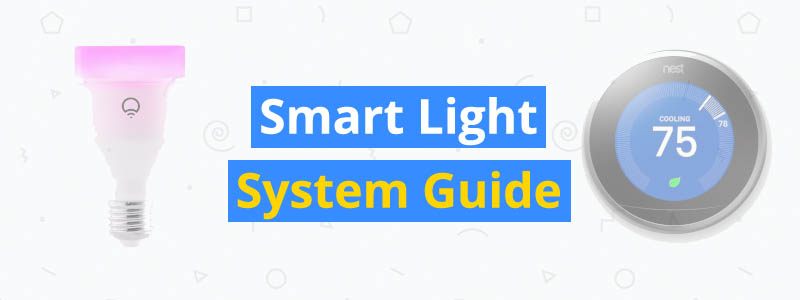A Beginner’s Guide to Smart Light Systems
Smart lights are the perfect way to get started with the world of smart technology. Most are literally as easy to set up as screwing in a light bulb. Anyone can grasp their basic mobile or voice controls, and once you’re ready to purchase other smart devices, they’ll be able to interact with each other.
Saying “Alexa, turn the living room light on” never gets tired, but making your lighting part of a bigger home automation picture doesn’t end there. Imagine waking up to light tailored to get you psyched for the upcoming day or creating a spooky atmosphere for Halloween by turning every smart light in the house a creepy shade of green. These are the kind of small changes that make life more enjoyable and take just seconds to set up.
Building your own smart lighting system isn’t difficult, but there are important questions that need answering first. How do smart lights work? What can you expect from them? Which are the best ones for both beginners and pro users? We answer all of these and more in our complete guide to smart lighting systems! Read on and you’ll learn everything you need to know to transform your lighting from a simple utility to a comprehensive system that elevates your home’s security, elegance, and smarts.
What kinds of smart light systems are there?
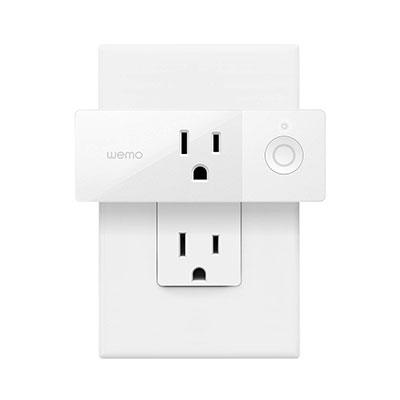
There are three ways of setting up a smart light system, each with their pros and cons:
Smart plugs are the cheapest form of smart light control. Plugs such as the WeMo Mini cost less than most smart light bulbs. They plug into a wall outlet and control the on/off status of any device you plug into them, including lamps. This lets you control “dumb”, even incandescent lights with your smartphone by regulating when power is being supplied. The drawback is that only plugged in lights are affected.
Smart dimmer switches control all the lights that are wired to them, letting you change brightness levels and set up lighting schedules remotely. They’re the most cost-effective solution if you’ve already invested in quality LED lights but want the added convenience smart functionality brings. The downside to getting smart switches is that they need to be installed in place of your old switches. This requires some electrical knowledge and should be performed by a licensed pro. Some LED bulbs can’t be dimmed and may not work properly with dimmer switches.
Smart light bulbs are the most comprehensive smart lighting solution. They come with various fitting options and brightness strengths, support multi-color LEDs, and some are even portable. They’re the only smart lighting solution for your porch or yard since some models are waterproof. There are many smart bulb manufacturers so it’s easy to find a model that satisfies your needs. On the other hand, smart bulbs are the most expensive option since even the cheapest ones cost more than $10 apiece. If you plan on replacing your home’s entire lighting with smart bulbs from a trusted manufacturer like Phillips, the cost can easily reach hundreds of dollars.
How does a smart light system work?
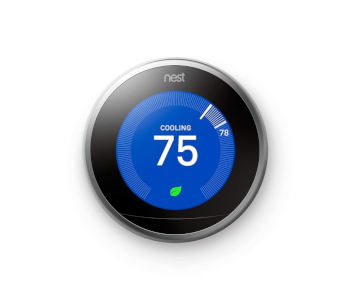
Remote control via smartphone, tablet, or voice assistant makes a lighting system smart. The switches or bulbs connect to the control device through one or more wireless protocols. Some models do so directly through Bluetooth or Wi-Fi. Others use protocols like ZigBee or Z-wave to minimize interference. These can’t talk to your phone directly, relying on a hub that bridges the communication gap instead. The hub needs to be connected to your router and will take up an Ethernet port.
What exactly your smart light system will be able to do depends on individual features. All of them will let you turn the lights on and off with an app. Some like Lutron’s Caseta dimmer switches also come with a remote, and most offer support for Amazon Alexa and Google Home. HomeKit is supported by fewer manufacturers due to Apple’s high admission standards, but popular brands like LIFX and Phillips Hue work well with it.
Wider smart home integration is another strong reason to invest in a smart lighting system. Most smart bulbs and switches are compatible with other smart devices like cameras, thermostats etc. either natively or through the IFTTT protocol. This way one device can trigger another if certain conditions are met. For instance, if you have Nest’s Smart Learning Thermostat, you can turn on a light once the thermostat’s Away mode is activated to discourage robbers from trying to break into your home.
Multi-colored smart bulbs are especially useful since you can configure them to behave differently based on the device that set them off. Such a bulb could flash blue when a connected smart leak detector is activated, yellow if your smart smoke alarm senses a fire hazard and so on.
The greatest thing about smart light systems is that they’re modular. This means that you can start out small with just a few bulbs or a single plug and expand as your needs and budget grow. The technology is appealing and here to stay. It also promises to be backward-compatible so you can replace your home’s lighting gradually without fear of the tech you installed becoming obsolete.
What features do smart lights have?
Shape
Most smart bulbs don’t stray far from the pear-shaped design of traditional incandescent bulbs. The major aesthetic difference between them is the heat sink that takes up an LED bulb’s bottom. This makes the light more concentrated. There are exceptions to the rule like the LIFX smart LED bulb. Its top is shaped like a cylinder which focuses the light it emits further.
LED light strips are a special kind of smart light. They are made of a series of LEDs that are strung together. They’re mainly used as ambient lights that add a soft glow to TVs, monitors, or cabinets. Larger versions are available for outdoor use as well.
Color options
The simplest smart lights when color is concerned are ones that emit white light at a fixed color temperature. These are also the most affordable models in every manufacturer’s lineup. More advanced models let you change the white color’s temperature. This ranges from 3,000 kelvins or a warm orange glow to 6,000+ kelvins at which point the light has a bluish tint. If you want to simulate daylight, 5,600K is the desired color temperature.
The best smart lights are those that produce natural-looking white light while also being able to glow in any other color. This is achieved by giving the user individual control over the light’s red, green, and blue diodes. By combining different brightness and saturation levels for each of the three main colors, you can create millions of colors all across the visible spectrum. Multi-colored bulbs are more expensive than white ones.
Fun stuff
Smart lights breathe life into a room and are adjustable based on the atmosphere you want to create. They can sync up to your phone’s or smart speaker’s music list and provide a light show that’s in tune with the beat. Some smart TVs can communicate with them as well. This causes the lights to change color depending on what’s on the screen, creating a visual experience that perfectly complements what you’re watching.
Which are the best smart light systems?
When choosing which smart light system to buy, it’s best to stick to one company. This way you’re making sure that every bulb or switch in the system you’re creating is compatible and that no conflicts will arise. Although some hubs support other bulbs and you could create scenes with different bulbs using IFTTT, expanding your setup with products from the same manufacturer is the most hassle-free approach.
Phillips Hue
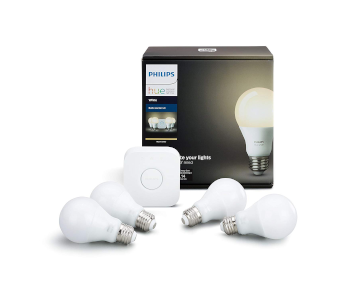
Phillips is the leader in smart light manufacturing and development. They offer the largest selection of smart lights including bulbs, strips, portable lights, porch lights, and more. The Hue line also includes accessories like motion sensors, dimmers, and tap switches. You’ll need to get the Hue hub for the bulbs to work, but it doesn’t only support proprietary bulbs, meaning you can get cheaper ones later!
The best Hue purchase for smart lighting beginners is the A19 Smart Bulb Starter Kit. It comes with the Hue hub and four A19 bulbs which give off a natural white light. They consume only 9.5 watts per hour while being as bright as a 60-watt incandescent bulb.
Hue is great because it supports Alexa, Google Home, and HomeKit. Individual bulbs are recognized as soon as you turn them on. Grouping the bulbs into rooms and setting up their schedules is easy thanks to the intuitive Hue app. The hub you get with the starter kit supports 50 bulbs, so there’s plenty of room to grow. The only downside to buying into the Hue ecosystem is the cost.
Lutron
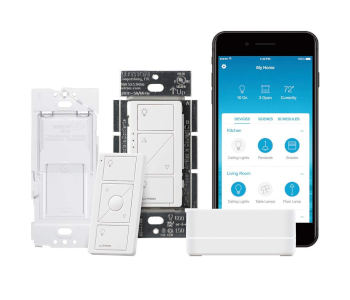
Lutron’s approach to smart lighting systems relies on smartening up existing light fixtures rather than insisting on expensive bulb replacements. They offer single-room and whole-house light solutions at reasonable prices. Lutron is also actively acquiring new patents and smaller companies which bring innovation and will expand the selection to include outdoor switches and more soon.
The Caseta Smart Light Switch is Lutron’s best-selling product. It acts as a standard dimmer switch while also letting you control the lights it is connected to wirelessly. The starter kit consists of the Lutron hub and the Caseta switch which communicate through a proprietary protocol. This ensures that there’s never any interference, making Caseta one of the most robust and responsive smart light systems.
Caseta has an excellent companion app. Controlling multiple switches and individual lights with it is intuitive since you can label and take pictures of each one. The app also has built-in support for third-party smart devices so you can register their accounts with it and have access to multiple devices from a single source.
LIFX
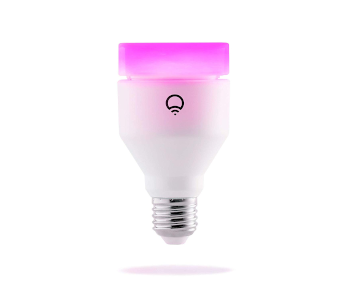
LIFX bulbs will set you back more than their Hue counterparts, but they’re brighter and don’t need a hub. This means that all you need to start making a smart lighting system powered by LIFX is an internet connection and a Mini White Light Bulb that goes for less than $20.
Most users will want to get the regular LIFX Smart Light Bulb however since it is more versatile. It is as bright as a traditional 75-watt bulb. There’s nothing traditional about it though – from the puck shape of its cover to its ability to sync with your music, the LIFX light bulb is in a class of its own. It’s not all just fun and games either. The bulb emits part of its light in the infrared spectrum and can boost a camera’s night vision mode by acting as an additional unseen light source.
Yeelight
If a limited budget is standing between you and a smart light system, consider Xiaomi’s Yeelight series of smart bulbs. Yeelight bulbs are cheaper than the competition and connect via Wi-Fi so no hub is required. They also support white color temperature adjustment and 16 million color selection, a feature previously unheard of for $20 bulbs.
Is switching over to a smart light system worth it?
If you’re mainly interested in switching to smart lights for long-term savings, the answer isn’t clear-cut. Since they’re LEDs, smart lights consume much less electricity than incandescent bulbs. They’re more expensive up front though and will take a lot of time to pay for themselves, especially if you also have to buy a hub. Replacing old incandescent bulbs with LED ones will cost you less in the long run, and even sticking with incandescent may cost less than investing in a smart light system. Cost is the most volatile consideration when buying into a smart light system though and it may even go down drastically as the technology matures.
Is it worth it to start building a smart home system today? Yes, and there’s a strong case for doing so. Installing a smart light system will be of tremendous help if you or someone in your household suffer from impaired mobility as all that’s needed to control the lights is either a tap or a voice command. Scheduled lighting adds another layer to your security system while scenes that incorporate lights into your daily routine make life easier. Finally but no less importantly, smart lights are fun to use and let you enrich your home’s décor in a unique way.

